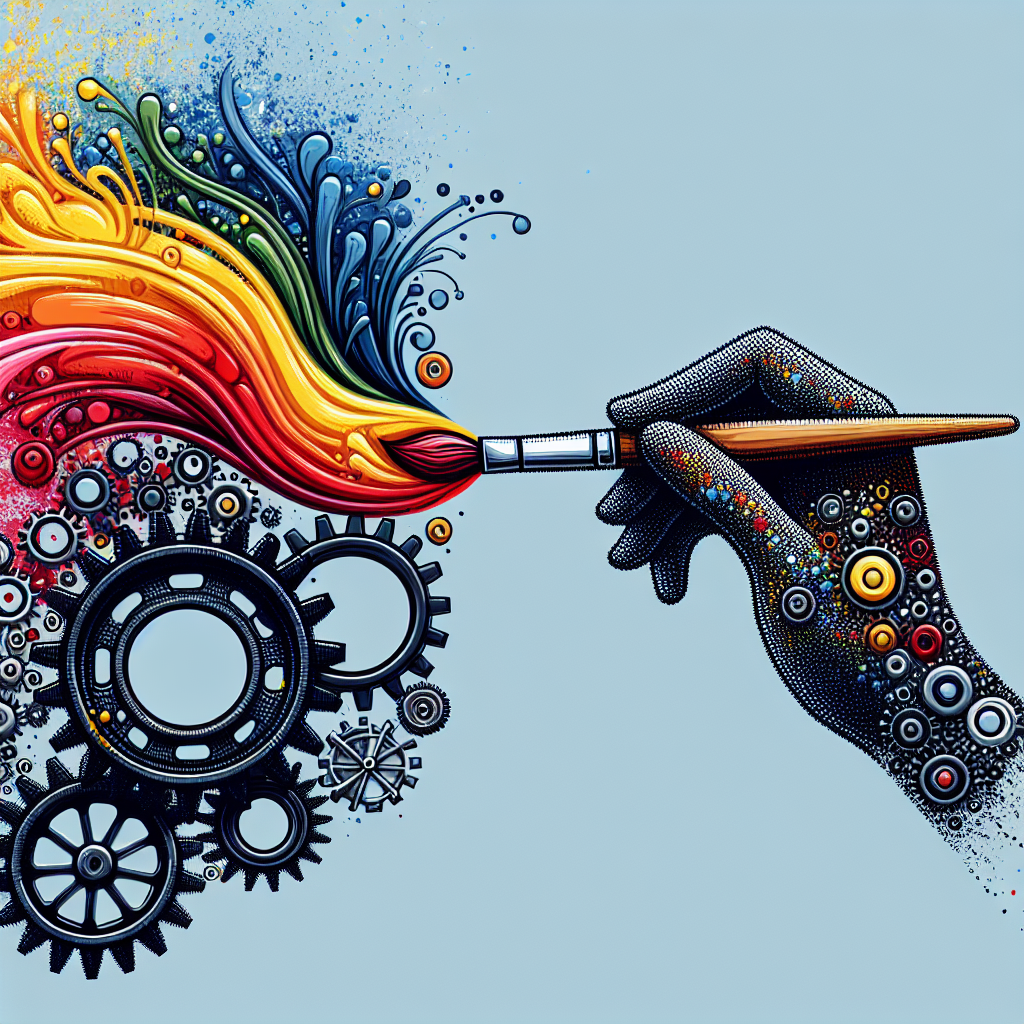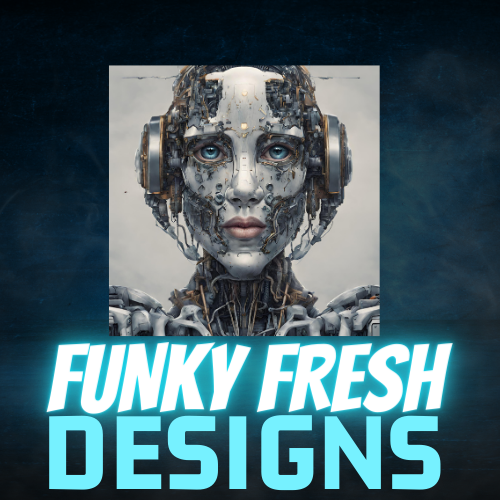Adapting AI For Design Preferences. Imagine a world where artificial intelligence (AI) not only understands your needs, but also adapts to your unique design preferences. From the fonts you prefer to the color schemes that resonate with your style, AI has the ability to cater to your creative desires. In this article, we explore how AI is revolutionizing the way we approach design, allowing us to personalize and enhance our visual experiences like never before. Get ready to embark on a journey where AI becomes your ultimate design companion, effortlessly tailoring every element to your liking.
Understanding AI in Design
Artificial intelligence (AI) has revolutionized various industries, and the field of design is no exception. AI has been harnessed to understand and adapt to design preferences, enabling designers to create more personalized, efficient, and on-trend designs. By leveraging AI techniques and collecting user feedback, designers can create exceptional experiences that cater to individual tastes. However, as AI becomes more prominent in design workflows, it is essential to consider ethical considerations and ensure that users have control over the design process. In this article, we will explore the challenges, benefits, techniques, ethical considerations, integration, future possibilities of AI in design preferences, and real-world case studies that showcase its effectiveness.
Challenges in Design Preferences
Lack of Personalization
One of the significant challenges in design is the lack of personalization. Designers often struggle to create tailored experiences for a vast range of users with diverse preferences. AI can play a crucial role in addressing this challenge by analyzing patterns, user data, and feedback to understand individual preferences and create designs that resonate with each user.
Subjectivity of Design Preferences
Design preferences are inherently subjective and can vary significantly from person to person. What may appeal to one individual may not have the same effect on another. AI provides a means to overcome this challenge by employing algorithms that decipher user preferences and generate designs that align with their tastes, ensuring a more personalized and engaging experience.
Evolving and Diverse Design Trends
Design trends are constantly evolving, and keeping up with the latest styles can be challenging for designers. AI can help designers stay abreast of design trends by analyzing large volumes of data, detecting patterns, and offering insights and recommendations. This enables designers to create designs that are not only visually appealing but also up-to-date with the latest trends.

Benefits of Adapting AI for Design Preferences
Enhanced Personalization
AI enables designers to deliver highly personalized experiences by leveraging user preferences, behavior, and historical data. By understanding a user’s specific design preferences, AI-adapted systems can generate designs that are tailored to their unique tastes. This level of personalization enhances user satisfaction and overall engagement with the designed interface or product.
Efficient Design Iterations
Design iterations are integral to the design process for improvement and refinement. However, manually iterating designs can be time-consuming and resource-intensive. AI can expedite the design iteration process by automating aspects of it. Through continuous analysis and learning, AI systems can provide real-time feedback and recommendations, allowing designers to rapidly iterate and improve upon designs.
Keeping up with Trends
Staying up-to-date with design trends is crucial for designers to create relevant and appealing designs. AI algorithms can analyze vast amounts of design data, monitor industry trends, and provide designers with valuable insights and recommendations. By adapting designs to current trends, designers can ensure their creations remain fresh and visually appealing.
AI Techniques for Design Preference Adaptation
Machine Learning Algorithms
Machine learning algorithms play a significant role in AI-driven design preference adaptation. These algorithms analyze user data, behavior, and feedback to uncover patterns and insights about individual design preferences. By leveraging these patterns, AI systems can generate designs that cater to specific user preferences.
Natural Language Processing
Natural language processing (NLP) empowers AI systems to understand and interpret human language. In the context of design preferences, NLP techniques can be employed to analyze user feedback, comments, and reviews. By extracting sentiment and understanding user preferences from textual data, AI systems can adapt designs to meet user expectations.
Image Recognition
Image recognition is a pivotal AI technique in understanding design preferences. By analyzing images, AI systems can identify visual elements that appeal to users and incorporate them into design generation. Leveraging image recognition, AI can develop a deep understanding of visual trends and user preferences, ultimately leading to better-designed products and experiences.

Collecting and Analyzing User Feedback
User Surveys and Questionnaires
User surveys and questionnaires are traditional methods of collecting feedback that have proven to be valuable in understanding design preferences. By incorporating AI techniques, such as sentiment analysis and natural language processing, these surveys can be analyzed more effectively, revealing deeper insights into user tastes and preferences.
Social Media Sentiment Analysis
Social media platforms provide a rich source of user opinions and feedback. AI systems can analyze social media posts, hashtags, and comments to gauge public sentiment and respond to design trends. By understanding how users engage with designs on social media, designers can gain valuable insights into public preferences.
Interactive Design Tools
AI-driven interactive design tools enable designers to gather real-time feedback from users during the design process. These tools allow users to interact with design elements and provide feedback, which is instantly analyzed by AI systems. Designers can then use this feedback to make informed design decisions that align with user preferences.
Ethical Considerations in AI Design Preferences
Privacy Concerns
As AI algorithms gather user data to understand design preferences, privacy concerns arise. It is crucial for designers and AI systems to prioritize user privacy and ensure that data collection and analysis adhere to ethical standards. Transparent data handling practices and obtaining user consent are vital to address privacy concerns.
Bias and Discrimination
AI systems may inadvertently introduce bias and discrimination into design preferences. This can occur due to the data used to train AI algorithms, which may contain inherent biases. Designers must actively mitigate these biases and ensure that AI systems are fair and inclusive, catering to the diverse preferences of users.
Transparency and User Control
Transparency and user control are important ethical considerations in AI-driven design preferences. Users should have visibility into how their data is being used, and they should have the ability to control and modify their design preferences. Empowering users to make informed decisions and exercise control over their design preferences fosters trust and accountability.
Integrating AI in Design Workflows
Collaboration between Designers and AI Systems
To fully harness the benefits of AI in design preferences, collaboration between designers and AI systems is crucial. Designers can work hand in hand with AI systems, employing their creativity and artistic expertise while leveraging the data-driven insights and recommendations provided by AI. This collaboration ensures the synergy between human creativity and AI-powered design adaptation.
Automated Design Recommendation Systems
AI-powered automated design recommendation systems can significantly enhance design workflows. These systems analyze user preferences and other contextual factors to generate design recommendations in real-time. By automating parts of the design process, designers can focus on the overall creative vision, while AI takes care of adapting designs to individual preferences.
Real-time Design Feedback
Real-time design feedback is essential for designers seeking to create optimal designs that cater to individual preferences. AI systems can provide designers with instant feedback on design elements, layout choices, and color schemes. By receiving real-time feedback, designers can iterate and refine their designs more efficiently, leading to improved user experiences.
The Future of AI in Design Preferences
Hyper-personalized Design Experiences
The future of AI in design preferences holds the promise of hyper-personalized experiences. As AI systems evolve and become more sophisticated, they will be able to adapt designs to not only preferences but also individual needs, moods, and context. This level of personalization will result in highly engaging and tailored design experiences for users.
AI-generated Design Templates
AI-generated design templates have the potential to transform the design industry. As AI systems become more adept at understanding design preferences, they can generate high-quality design templates that cater to diverse styles, industries, and purposes. These templates can serve as a valuable resource for designers, enabling them to create polished designs quickly.
Design Systems Driven by AI
AI-driven design systems can revolutionize the way designs are created and managed. These systems can learn from user feedback, analyze design trends, and generate recommendations for design elements and compositions. By integrating AI into the core of design systems, designers can benefit from intelligent guidance and produce designs that exceed expectations.
Case Studies of AI in Design Preference Adaptation
Google’s AutoDraw
Google’s AutoDraw is a prime example of AI in design preference adaptation. AutoDraw employs machine learning algorithms to recognize hand-drawn sketches and provide users with professional-quality icons and images that match their drawings. This AI system adapts to users’ design preferences, offering them personalized suggestions and saving time for designers.
Adobe Sensei
Adobe Sensei, the AI platform developed by Adobe, showcases the power of AI in understanding design preferences. By leveraging machine learning algorithms and image recognition, Adobe Sensei can identify and extract design elements from images, enabling designers to swiftly incorporate those elements into their designs. This intelligent system adapts to user design preferences, assisting them in creating visually impactful designs.
Netflix’s Personalized Thumbnails
Netflix utilizes AI to adapt design preferences in the form of personalized thumbnails. By employing machine learning algorithms and user behavior analysis, Netflix presents users with thumbnails tailored to their preferences. This AI-driven adaptation enhances the overall user experience by showcasing content that aligns with individual tastes, ultimately increasing engagement and satisfaction.
Conclusion Adapting AI For Design Preferences
As AI continues to evolve, its integration with design preferences holds immense potential. The challenges of personalization, subjectivity, and evolving trends can be overcome by harnessing the power of AI techniques such as machine learning, natural language processing, and image recognition. By collecting and analyzing user feedback through surveys, social media sentiment analysis, and interactive design tools, designers gain valuable insights to create personalized experiences. However, ethical considerations must be addressed, including privacy, bias, and transparency. Integrating AI into design workflows through collaboration, automated recommendation systems, and real-time feedback facilitates faster and more effective design iterations. The future of AI in design preferences presents hyper-personalization, AI-generated design templates, and design systems driven by AI. Case studies such as Google’s AutoDraw, Adobe Sensei, and Netflix’s personalized thumbnails demonstrate the practical application and benefits of AI in design preference adaptation. As designers embrace AI, they can unlock new levels of creativity and deliver designs that captivate and delight users.
